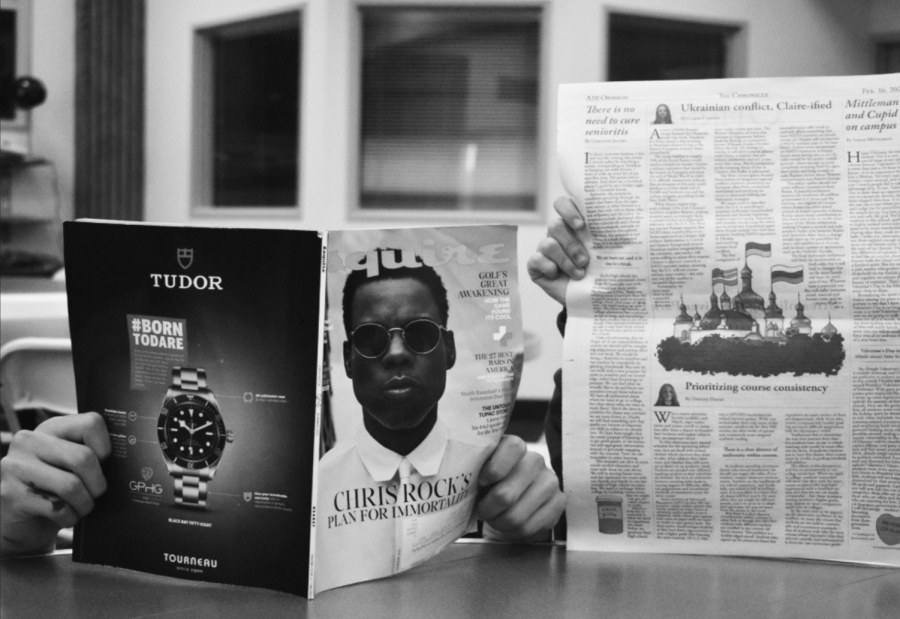Reframing Ukrainian News
March 24, 2022
Six thousand miles away, we watched the first few days of Russian President Vladimir Putin’s invasion of Ukraine on our TV screens. We saw powerful images of and read worri- some articles about Ukrainian families fleeing their destroyed homes, soldiers risking their lives in service of their country and citizens standing in solidarity with each other in the face of horrific casualties. Over the last few weeks, these stories have helped us understand both the consequences of war and their emergent heroes, shaping our perception of the two countries and the conflict itself.
In Russia, the narrative is quite different. Putin and Russia’s state-controlled media called the war in Ukraine an attempt to “de-Nazify” the country and claimed Ukraine has no distinct culture or national identity to justify its sovereignty. While this propaganda was predominantly picked up by the far-right media sources in Western nations, it is not the only example of misleading information generated as a result of the Russian invasion.
According to Cybara, a misinformation monitoring platform, over 115,000 Twitter and Facebook accounts have allegedly spread Russian propaganda, and negative content towards Ukraine increased by over 11,000% on Twitter on Feb. 14. Moreover, some Russian sources are not only attempting to spread misinformation but also to limit the spread of infor- mation by banning Facebook and restricting access to other social media platforms.
Times of war and chaos make online platforms and our fast-paced media environment more prone to error; with missiles in the air and a sense of international unity against the Kremlin, even seemingly credible sources latch on to stories that are inspiring but factually inaccurate.
Misinformation exists on both sides of the conflict. As the Russian government tightens its grip on social media, some Ukrainian outlets have also spread misleading posts. A verified Ukrainian military Facebook page posted what it claimed to be a video of Ukrainian forces in action but was actually from a conflict in Syria in 2020, according to NBC. Another video, which obtained almost 20 million views on TikTok, showed a soldier parachuting out of an airplane—in a training exercise in April 2016.
These examples of misinformation distort the reality of war and its severe consequences. They are also not a geographically isolated problem—the reach of social media is wide enough that Western nations also have access to news spread by unreliable sources, forcing facts even farther out of reach. Almost every national newspaper covers major global events, so it is our responsibility to train ourselves to obtain accurate reporting from trustworthy sources.
At a time when information is sparse and the truth is hard to uncover, local reporting becomes more important than ever. It condenses and clarifies complex global events by focusing on factual reporting that bridges partisan divides. Unlike national and international sources, it is not beholden to shifting global perspectives, instead focusing on verifiable facts and impacts on the community.
At The Chronicle, we strive to maintain accuracy and uplift the voices of our diverse student body. We remain committed to reporting on pertinent issues that affect our world and local environment. Whether it is an analysis of the Ukraine crisis’ roots in a pre-war opinion column, a feature piece on students’ and teachers’ reactions to the outbreak of war or a Ukrainian American editor’s reflection on her identity, we continue to work towards reporting that delivers useful information and serves as a platform for community voices.



























